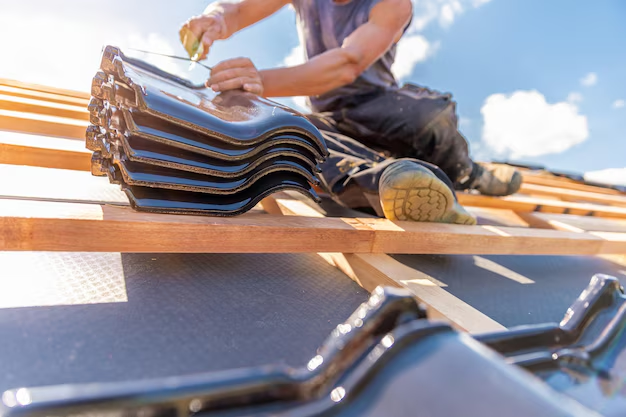Understanding the Roof Square: What You Need to Know
If you're delving into home improvement or roofing repair, you might encounter the term "roof square" sooner than later. It’s an industry-specific measurement that can be confusing for newcomers but is essential to grasp for anyone considering construction or remodeling projects.
What Exactly Is a Roof Square?
A roof square is a standardized unit of measure in the roofing industry. It equals 100 square feet of roofing. This measurement is not only utilized by contractors to calculate the amount of materials needed but also to estimate costs. Using roof squares simplifies the arithmetic for both buyers and roofers when discussing large roofing areas.
How Roof Squares Simplify Roofing Projects
- Time Efficiency: Simplifying calculations into roofing squares speeds up both the estimation process and the actual roofing work.
- Material Estimation: Roof squares make it easier to determine how much roofing material you need, whether it’s shingles, tiles, or metal sheets.
- Cost Calculation: Since labor and material costs are often calculated per square, knowing your roof's square footage can help accurately forecast expenses.
Calculating the Roof Squares
To determine the number of roof squares for your home, you'll need to calculate the total roof area in square feet and then divide by 100. Here’s a simple formula:
[ ext{Total Roof Squares} = frac{ ext{Total Roof Area in Square Feet}}{100} ]
While this math is straightforward in theory, the complexity arises in measuring the actual roof area, especially for sloped roofs. Consider hiring a professional if you’re unsure about measurements.
Navigating Costs and Assistance
Roofing can be expensive, especially if you encounter unforeseen repairs. Thankfully, there are financial tools and programs that might help ease the burden.
Financial Assistance and Programs
Federal and State Aid: Explore government-sponsored home repair programs. They often offer grants or low-interest loans for energy-efficient roofing upgrades.
Non-Profit Initiatives: Some non-profit organizations provide financial assistance for home improvements to low-income households, including roofing projects.
Insurance Coverage: Check your homeowner’s insurance policy. Damages caused by storms or other insured events might be covered.
Company Financing: Some roofing companies offer financing plans with flexible terms, allowing you to spread the cost over time.
Understanding these options can not only save you money but also make necessary roofing repairs more accessible. Be sure to compare these tools thoroughly to choose the best fit for your financial situation.
Tools to Consider for Financial Relief
Exploring avenues for financial relief can make handling roofing expenses manageable. Here are some options to consider when planning your next roofing project:
- 🏦 Government Aid Programs: Federal and state grants
- 💰 Non-Profit Home Repair Assistance: Aid for eligible households
- 📜 Homeowner’s Insurance: Check for coverage on roof damage
- 🏠 Financing Plans from Contractors: Flexible payment options
- 💳 Credit Solutions: Low-interest credit cards or loans for home repairs
Empowering yourself with knowledge about roof squares and financial assistance can significantly ease the path to achieving your ideal home improvement project. Whether you’re a DIY enthusiast or planning to hire professionals, understanding these basics is a valuable first step.
